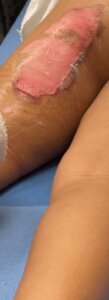BURNED IN ACCIDENT – PERSONAL INJURY LAWYERS
One of the most common accidents that injure a child is being burned. Our burn injury lawyers handle these cases frequently. In most cases, the burn is from hot water or other liquid. Minor burns can often be treated safely at home. However, in some cases, medical attention is necessary.
Although hot liquid is the most common cause of burn to a child, it is not the only way. Other ways in which a child is burned include contact with a flame or hot object, sun exposure, and contact with chemicals such as drain cleaner. Also, electrical burns from sticking fingers or objects into electrical outlets or chewing on electrical cord.
Our top Minnesota Personal Injury attorneys represent also people burned in an accident or because of a defective product. Sadly, our lawyers see many child burn injury cases. But we also see adult cases, often from a work injury.
A lawyer from our office recently came across this article in Medical New Today that discusses types of burn injury cases. Here is an excerpt from the well written article:
Cause-specific treatment for burns
Some burns can require immediate action dependent on the source of the burn. Electrical and chemical burns have the potential to be serious. Burns caused by chemical sources should be flushed with running water.
For burn accident caused by a flame, immediately extinguish the flame. Many readers will remember the safety sequence “Stop, Drop and Roll.” Have your child stop what they are doing immediately, drop to the ground and roll. They should then be covered with a blanket or jacket and the burned clothing and jewelry removed. Call immediately for emergency assistance. Also, follow the instructions below for a second- or third-degree burn.
When the cause of the burn is electrical or chemical, other actions are required. If the burn was inflicted by an electrical source, the child must no longer contact with the source to lower the risk of someone else receiving a shock.
If the burn was caused by a chemical source, flush the affected area for 5 minutes with running water in a sink or with a garden hose. Make sure to leave the clothing in place until you begin flushing the area.
For small chemical burns, it is recommended that flushing continues for 10-20 minutes before a sterile bandage or gauze is applied. If the chemical burn affects the mouth or eyes, flush thoroughly and seek immediate medical care.
In the US, poison control (800) 222-1222 should be called, followed by the emergency department, if a child ingests a chemical or potentially harmful object.
Types of burns and treatment
Not all burns are the same. Below are outlines of the three types of burn and their treatment.
First-degree burns
A first-degree burn affects only the outermost layer of the skin. It produces symptoms such as redness, pain and mild swelling. However, this type of burn does not produce blisters and is dry. Symptoms often resolve quickly within 3-6 days. You may notice some skin peeling within the first 1-2 days of the incident. Pain from a first-degree burn typically resolves quickly, lasting approximately 24-48 hours.
Treatment of a first degree burn is mostly up to you. These burns are typically treated with a cold compress (not ice) or cool water over the burn for 3-5 minutes. Then, apply lotions and topical creams such as aloe vera. Pain medication such as acetaminophen or ibuprofen can also be used as directed.
Although not required, the area of a first degree burn can be covered with an adhesive bandage or gauze for 24 hours. To avoid worsening the burn or causing infection, do not use butter, grease, or other treatments. Speak with your doctor if you have concerns or if the burn is not healing as expected.
Second-degree burns
A second degree burn, also known as partial thickness burn, is more extensive than first degree burns. It effects both the outer layer of the skin (the epidermis) and a portion of the layer beneath (the dermis).

A second degree burn produces blisters, severe pain, redness and swelling. The blisters open, giving the burn a pinkish-red and wet appearance. Second-degree burns may also exhibit an irregular white or discolored appearance. Because these burns are more extensive than first-degree burns. The time for symptom resolution and healing can be upward of 3 weeks. As with other burn types, treatments vary based on the cause, location and extent of the burn. Also the health and medical history, tolerance for treatment and personal preference makes a difference.
Second-degree burns require immediate medical attention and treatment. Jewelry and clothing near the burn should be removed. In addition, blisters should be kept intact and the area should be kept in cool water for 3-5 minutes. After applying cool water, cover the area with a clean and dry cloth.
As with a first-degree burn, to avoid worsening the burn or causing infection. In particular, do not use grease or powder. Just use the the treatments discussed in the section on first-degree burns. Medical interventions may include antibiotic ointments, medication, dressing changes and cleaning.
Third-degree burns
A third-degree burn, also known as full thickness burn, affects the outer epidermis and the entire dermis under the top layer of the skin. They commonly exhibit skin that appears dry, leathery, black, white, brown or yellow. There may also be swelling and lack of pain due to injury-related nerve damage. These burns require immediate medical attention and possible burn center evaluation. A third degree burn will not heal well without treatment.
With a third degree burn, new skin will not regenerate due to the extent of skin and hair follicle damage. Patients will instead require a skin graft. The child should remain in a lying position with the affected area elevated. First, jewelry and clothing near the burn should be removed. Also, blisters should be kept intact and the area should be kept in cool water for 3-5 minutes. After applying cool water, cover the area with a clean and dry cloth. Again, do not use butter, grease, or powder.
As with other burn types, treatments vary. Treatment for a third degree burn may include the cleaning or debriding of the affected area, intravenous (IV) fluids, and antibiotics (oral or IV). Afterwards, there may be topical antibiotic creams, nutritional supplements, and increased dietary protein. Ultimately there will be skin grafting and possible reconstructive surgery.
When to call a doctor or seek medical attention
Immediate medical attention is required when:
- There is a likely second- or third-degree burn
- Burns are larger than 2-3 inches or cover more than 10% of the body. In these cases, it is not recommended to use wet compresses or ice as these will increase the risk of hypothermia. Instead, use clean, soft cloths or towels to cover the burned area
- Fire, electricity or chemicals were the cause of the burn
- The burn involves the face, scalp, hands, joint surfaces or genitals
- There is the presence of swelling, pus, worsening redness or red streaking of the affected area.
ATTORNEYS FOR BURN ACCIDENT INJURY COMPENSATION
If you or your child have sustained a burn injury in a Minnesota accident or because of a defective product, please call our office. You can speak with a best burn injury lawyer for a free consultation. Pam Rochlin and David Rochlin are experienced (over 25 years) personal injury attorneys. We get complete and fair compensation for people injured in accidents.
If you have been burned in an accident, our attorneys will make sure your medical bills are paid and lost wages are recovered. You should also be appropriately compensated for pain and suffering and scarring. Pam was previously a partner at Meshbesher & Spence. However, she offers personal attention to her clients. Pam was the 2015 President of Minnesota Women Lawyers, an organization with more than 1300 members. Pam and David are married, and we treat our clients like members of our own family. You can meet a top burn injury lawyer at our offices in Minneapolis, St. Louis Park, Edina, or Woodbury.
An attorney will also meet you at your home to discuss your case if you have been burned in an accident in St. Paul MN, Roseville, Forest Lake, Brooklyn Park, Brooklyn Center, and White Beak Lake. Also, Apple Valley, Lakeville, Burnsville, Chanhassen, Chaska, Albert Lea, Mankato, and other cities throughout Minnesota. The consultation is free and we will answer your questions. Further, we will never charge anything unless you are compensated for your injury.
